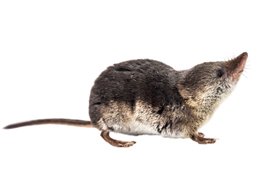
Shrew Behavior
Shrews have a high metabolic rate that forces them to eat frequently. In fact, they are able to consume up to three times their body weight daily. This also means the pests leave behind plenty of droppings. In yards and around houses, shrew poop can become an issue for homeowners.
What Do Shrew Feces Look Like?
About 2mm in diameter and 6mm long, shrew droppings are dark in color and have a curled or corkscrew shape. The pests usually deposit them in piles. Like the animals themselves, shrew waste tends to have a distinct, unpleasant smell.
Shrews in Homes
While it’s not common, shrews may accidentally invade homes. Their presence indoors may pose risks to human health, as the pests can carry disease-causing ticks. Shrew feces and urine may also contaminate stored foods.
Shrew Control
If cornered or threatened, shrews sometimes emit a skunk-like, musky odor or bite in self-defense. Homeowners who notice shrew droppings or other problems shouldn’t attempt to handle the pests on their own. Instead, contact the wildlife professionals at Critter Control to safely and effectively deal with infestations.